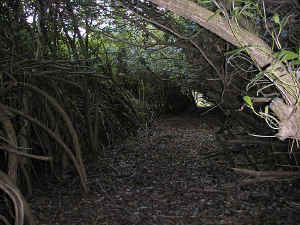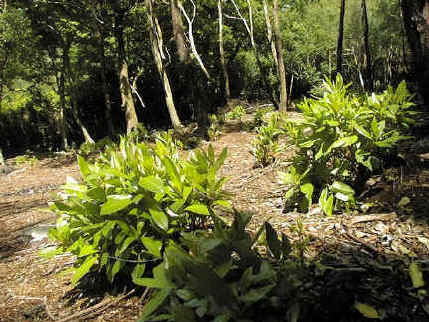| Seedlings occurred in surprisingly high densities across most of the
project site, given the short length of time that has elapsed since clearance was
completed. The majority of the seedlings belonged to tree species already present on the
project site, but seedlings of several perennial species such as Foxgloves, Brambles,
Gorse, Ivy and Honeysuckle were also present. It is likely that germination (from the
seed bank present in the soil) was promoted by the raking and removal of the leaf litter
layer. Area 4 showed little sign of regeneration in comparison to the other regions,
containing few seedlings and virtually no mosses in the ground layer. This is likely to be
due to the fact that this area, although cleared first, was the last to be raked. There
has therefore been less time for germination and establishment to occur in this area.
The regional differences in Rhododendron cover and physical habitat observed prior to
clearance were reflected in regional variations in regeneration across the project site.
These included variations in species composition and individual species density. Some, if
not all, of these regional variations were attributable to the nature of the original
Rhododendron cover.
Rhododendron regenerates very rapidly after clearance, particularly in areas which were
previously densely covered. In Area 2 on the project site, 58% of a 20m square was covered
in regenerating Rhododendron, less than a month after clearance. It is therefore not
enough just to cut down the Rhododendron, the stumps must then be treated with some form
of herbicide (in this case, Roundup) in order to prevent regrowth. If this is not done, it
would not take long for the Rhododendron to completely dominate the area once more.
|

